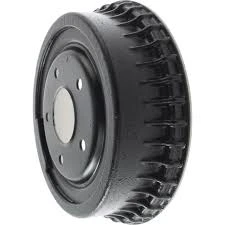
-
 Afrikaans
Afrikaans -
 Albanian
Albanian -
 Amharic
Amharic -
 Arabic
Arabic -
 Armenian
Armenian -
 Azerbaijani
Azerbaijani -
 Basque
Basque -
 Belarusian
Belarusian -
 Bengali
Bengali -
 Bosnian
Bosnian -
 Bulgarian
Bulgarian -
 Catalan
Catalan -
 Cebuano
Cebuano -
 Corsican
Corsican -
 Croatian
Croatian -
 Czech
Czech -
 Danish
Danish -
 Dutch
Dutch -
 English
English -
 Esperanto
Esperanto -
 Estonian
Estonian -
 Finnish
Finnish -
 French
French -
 Frisian
Frisian -
 Galician
Galician -
 Georgian
Georgian -
 German
German -
 Greek
Greek -
 Gujarati
Gujarati -
 Haitian Creole
Haitian Creole -
 hausa
hausa -
 hawaiian
hawaiian -
 Hebrew
Hebrew -
 Hindi
Hindi -
 Miao
Miao -
 Hungarian
Hungarian -
 Icelandic
Icelandic -
 igbo
igbo -
 Indonesian
Indonesian -
 irish
irish -
 Italian
Italian -
 Japanese
Japanese -
 Javanese
Javanese -
 Kannada
Kannada -
 kazakh
kazakh -
 Khmer
Khmer -
 Rwandese
Rwandese -
 Korean
Korean -
 Kurdish
Kurdish -
 Kyrgyz
Kyrgyz -
 Lao
Lao -
 Latin
Latin -
 Latvian
Latvian -
 Lithuanian
Lithuanian -
 Luxembourgish
Luxembourgish -
 Macedonian
Macedonian -
 Malgashi
Malgashi -
 Malay
Malay -
 Malayalam
Malayalam -
 Maltese
Maltese -
 Maori
Maori -
 Marathi
Marathi -
 Mongolian
Mongolian -
 Myanmar
Myanmar -
 Nepali
Nepali -
 Norwegian
Norwegian -
 Norwegian
Norwegian -
 Occitan
Occitan -
 Pashto
Pashto -
 Persian
Persian -
 Polish
Polish -
 Portuguese
Portuguese -
 Punjabi
Punjabi -
 Romanian
Romanian -
 Russian
Russian -
 Samoan
Samoan -
 Scottish Gaelic
Scottish Gaelic -
 Serbian
Serbian -
 Sesotho
Sesotho -
 Shona
Shona -
 Sindhi
Sindhi -
 Sinhala
Sinhala -
 Slovak
Slovak -
 Slovenian
Slovenian -
 Somali
Somali -
 Spanish
Spanish -
 Sundanese
Sundanese -
 Swahili
Swahili -
 Swedish
Swedish -
 Tagalog
Tagalog -
 Tajik
Tajik -
 Tamil
Tamil -
 Tatar
Tatar -
 Telugu
Telugu -
 Thai
Thai -
 Turkish
Turkish -
 Turkmen
Turkmen -
 Ukrainian
Ukrainian -
 Urdu
Urdu -
 Uighur
Uighur -
 Uzbek
Uzbek -
 Vietnamese
Vietnamese -
 Welsh
Welsh -
 Bantu
Bantu -
 Yiddish
Yiddish -
 Yoruba
Yoruba -
 Zulu
Zulu
High-Performance Centrifuge Brake Drums for Superior Stopping Power
Understanding Centrifuge Brake Drums Function and Importance
Centrifuge brake drums are critical components found in various industrial applications, especially in equipment that involves high-speed rotation. Their primary role is to manage the energy generated by centrifugal forces during operation, ensuring the safety and efficiency of machinery. This article explores the function, design, and significance of brake drums in centrifuges.
At the core of a centrifuge's operation is the generation of centrifugal force, which separates substances based on density. When the centrifuge is in motion, the necessary kinetic energy is considerable; hence, effective braking systems are essential for stopping the machine safely and quickly. Centrifuge brake drums are designed to dissipate this energy, converting it into heat through friction, which is crucial for controlled deceleration.
Brake drums operate through a combination of mechanical and sometimes hydraulic systems. As the centrifuge reaches its desired speed, the braking mechanism engages, pressing friction materials against the drum. This friction not only slows down the rotor but also ensures that the machine can be stopped without causing damage to the components or the materials being processed. The construction of brake drums is often robust, using materials that can withstand high levels of heat and wear.
centrifuge brake drums

The design of these brake systems is also essential for ensuring longevity and reliability. High-quality materials like hardened steel or composite materials are commonly used to fabricate brake drums, providing durability under extreme operational conditions. Additionally, advanced designs may incorporate ventilation or cooling features to further manage heat buildup during braking, enhancing performance and safety.
In industries such as pharmaceuticals, chemical processing, and food production, the importance of reliable centrifuge brake drums cannot be overstated. Any failure in the braking system can lead to catastrophic accidents, product loss, or contamination. Therefore, regular maintenance and inspection of brake components are vital practices to ensure optimal performance.
In conclusion, centrifuge brake drums play a pivotal role in the safe and efficient operation of high-speed machinery. Their ability to convert kinetic energy into manageable forms is crucial for enforcing safe operational thresholds. As technology advances, improvements in materials and design will continue to enhance the efficiency, safety, and reliability of these essential components. Understanding their function underscores the importance of regular maintenance, ensuring that these systems remain robust and capable of handling the demands of industrial processes.
-
Rear Drum Brakes Maintenance TipsNewsAug.04,2025
-
Key Components Affecting Brake Drum FunctionNewsAug.04,2025
-
Important Inspection for Truck Drum BrakeNewsAug.04,2025
-
How to Prepare for Changing Rear Drum BrakesNewsAug.04,2025
-
Essential Tools for Cleaning Drum Brakes ProperlyNewsAug.04,2025
-
Brake Drum Function GuideNewsAug.04,2025
-
Safety Features of Red Brake DrumsNewsAug.01,2025
